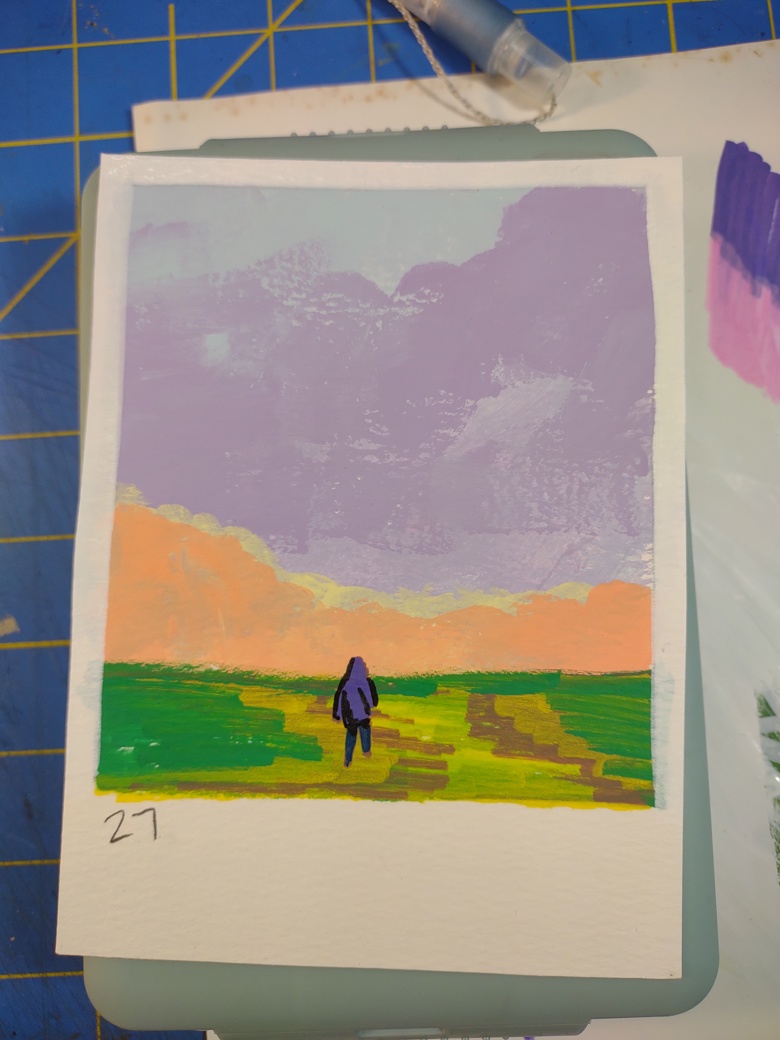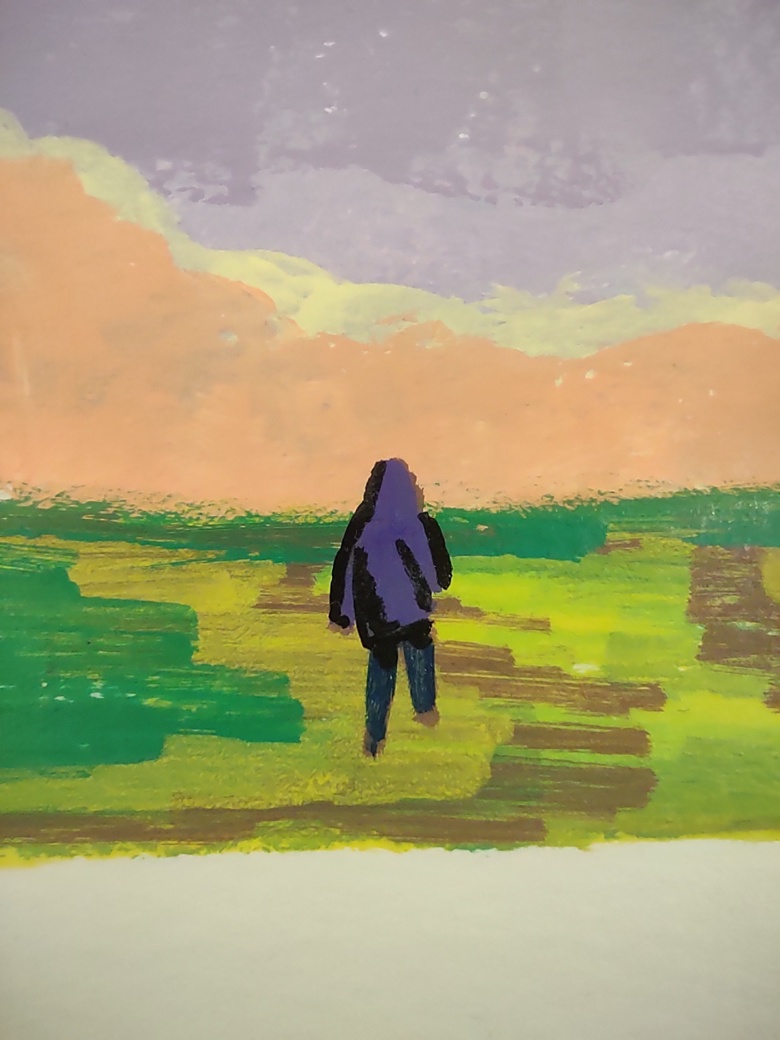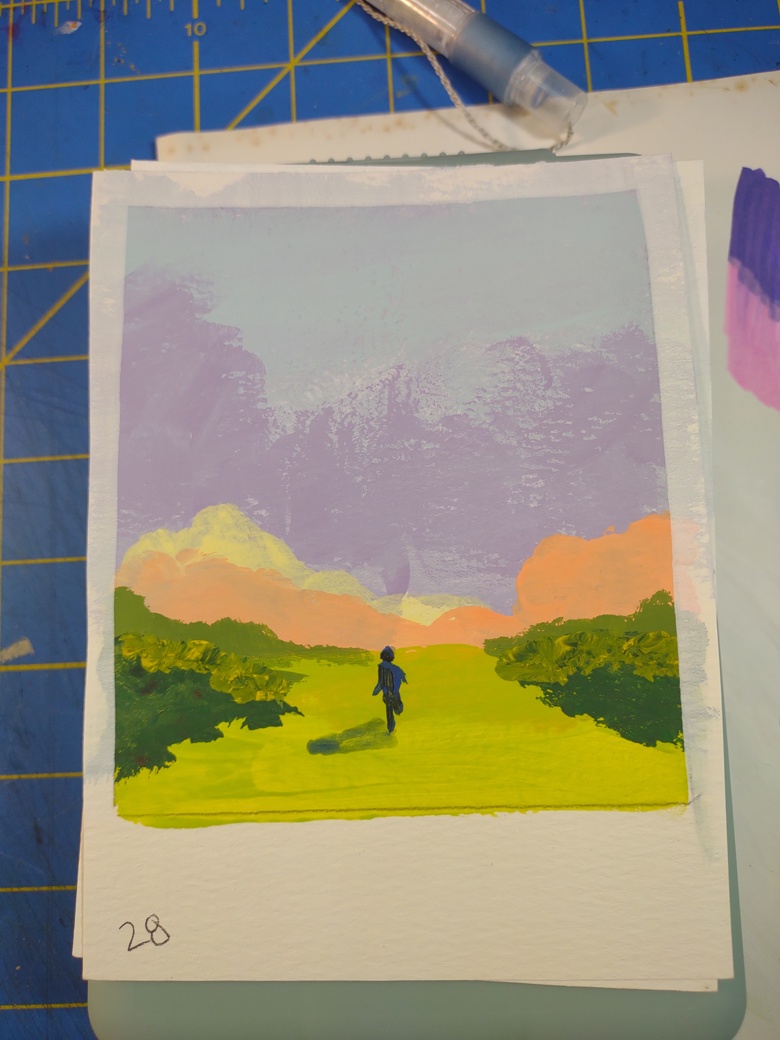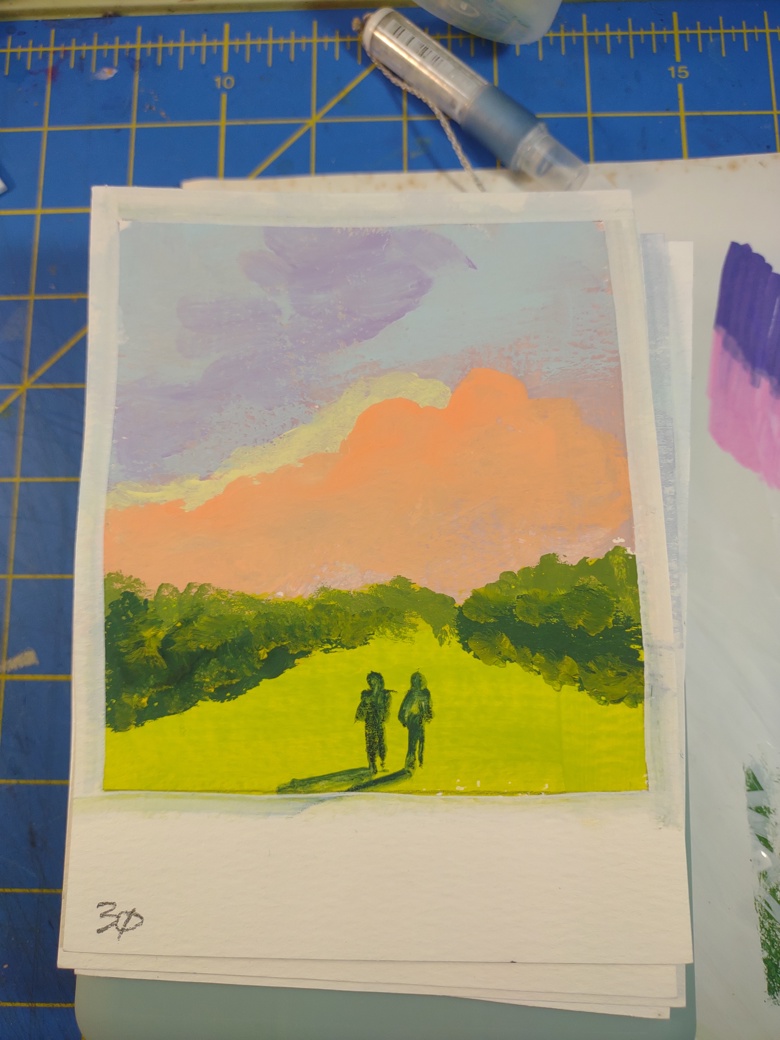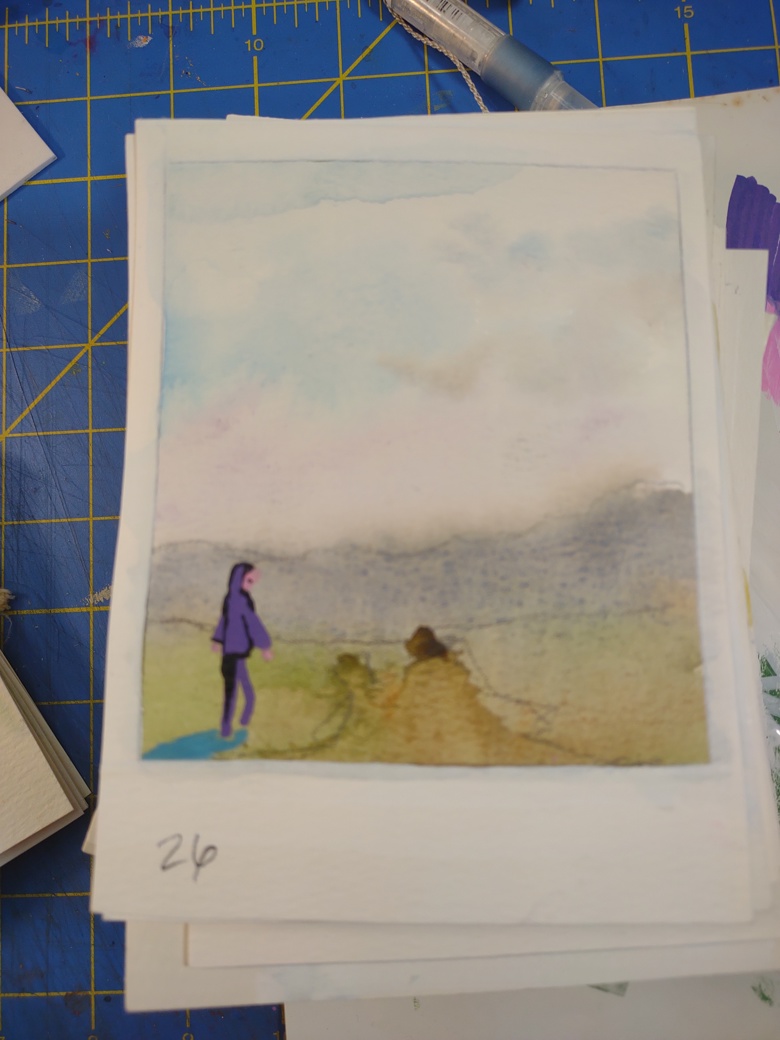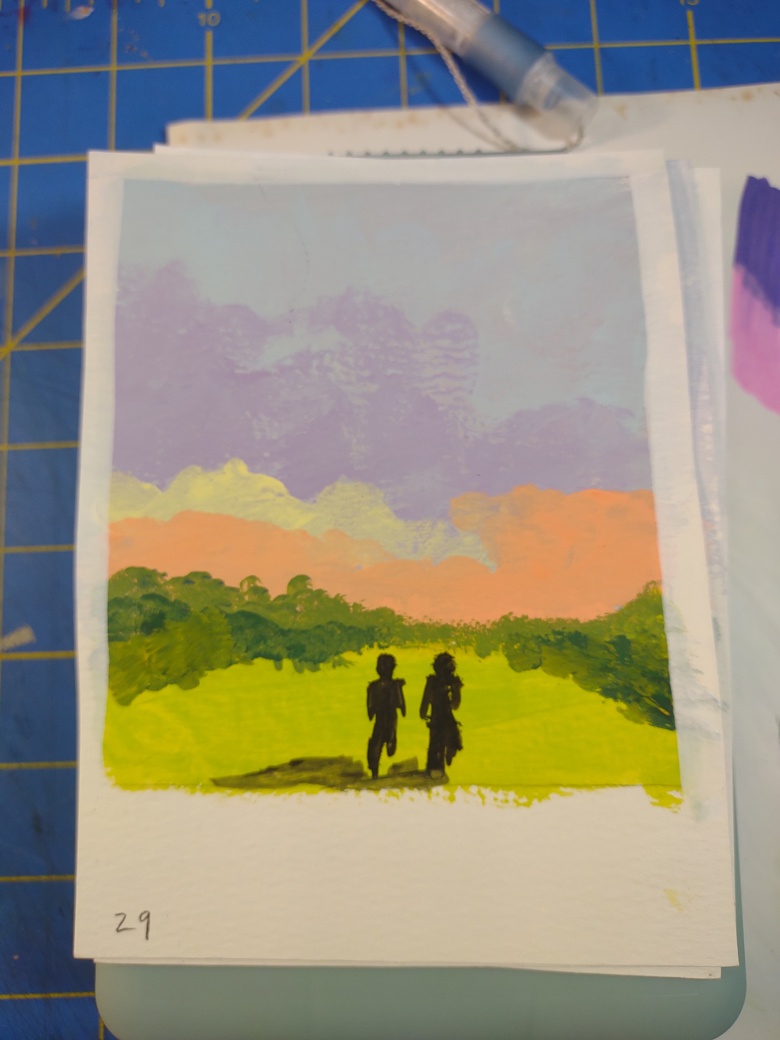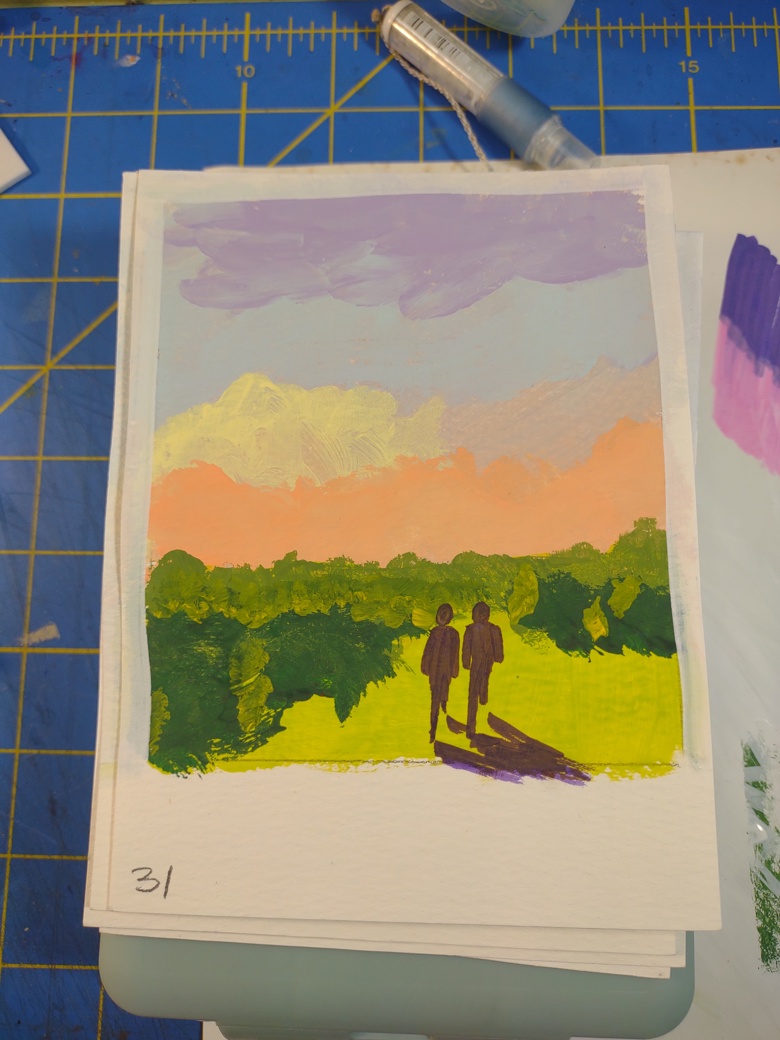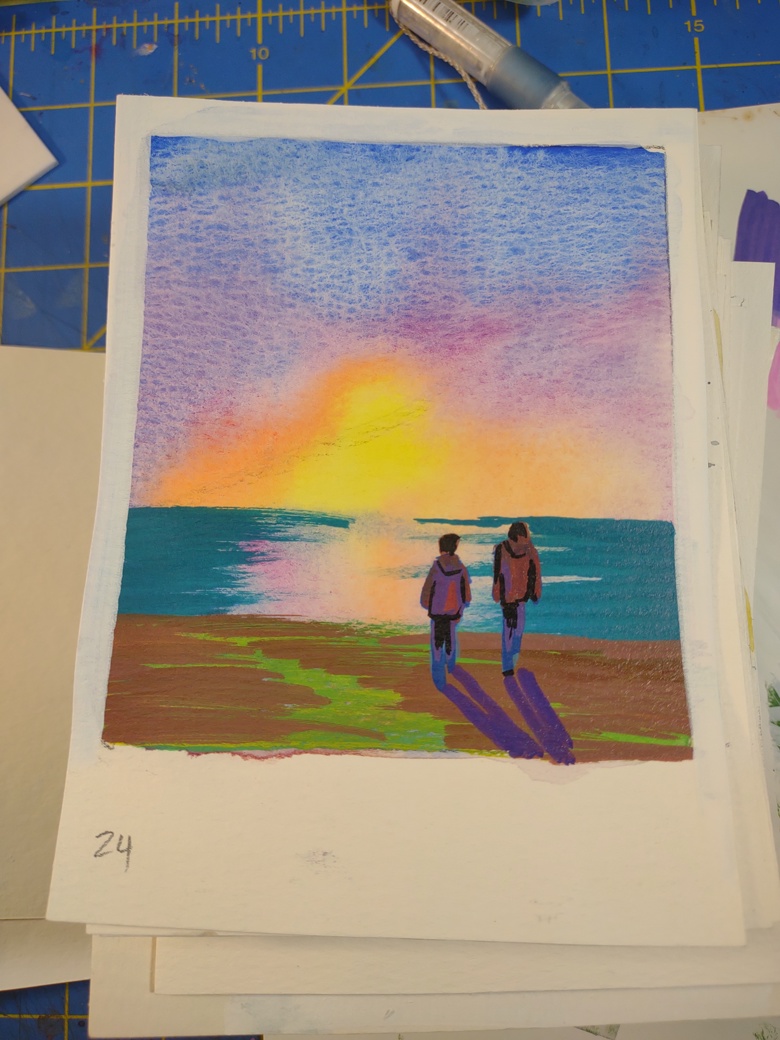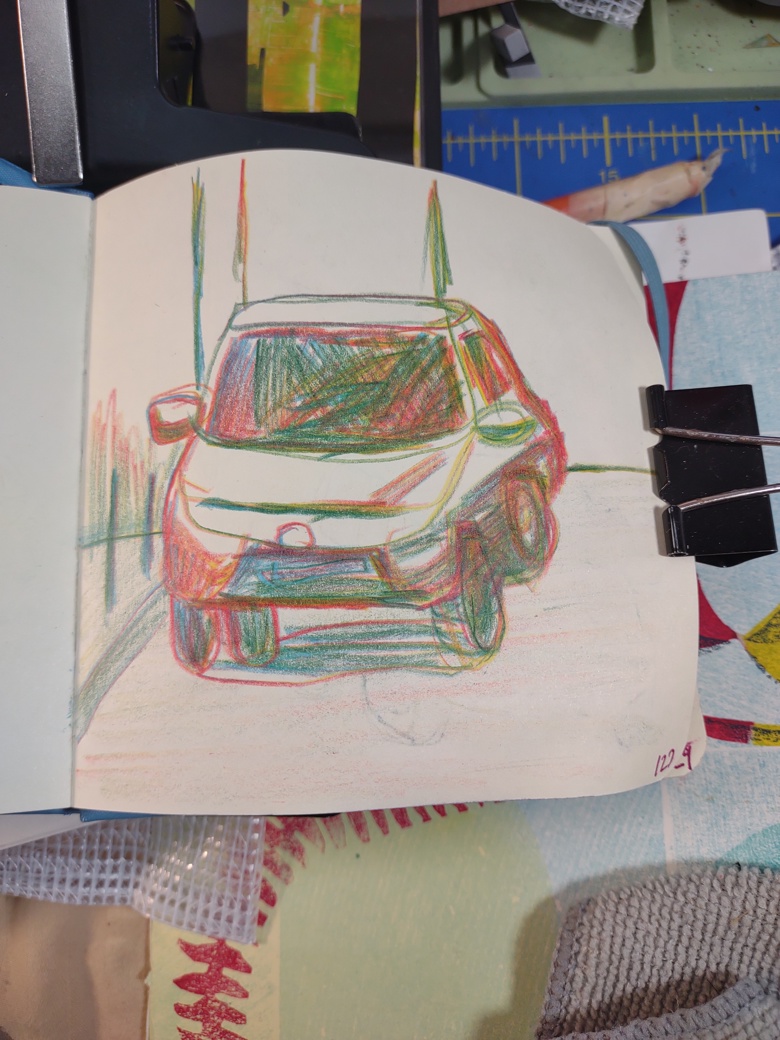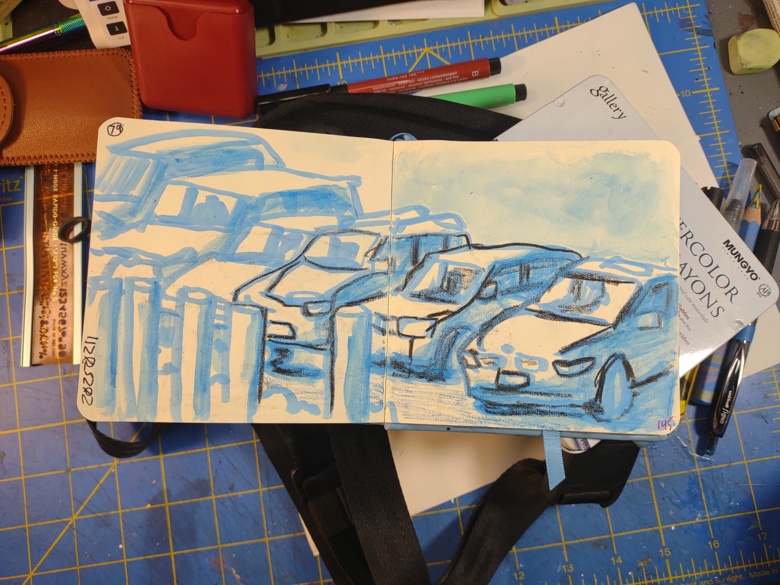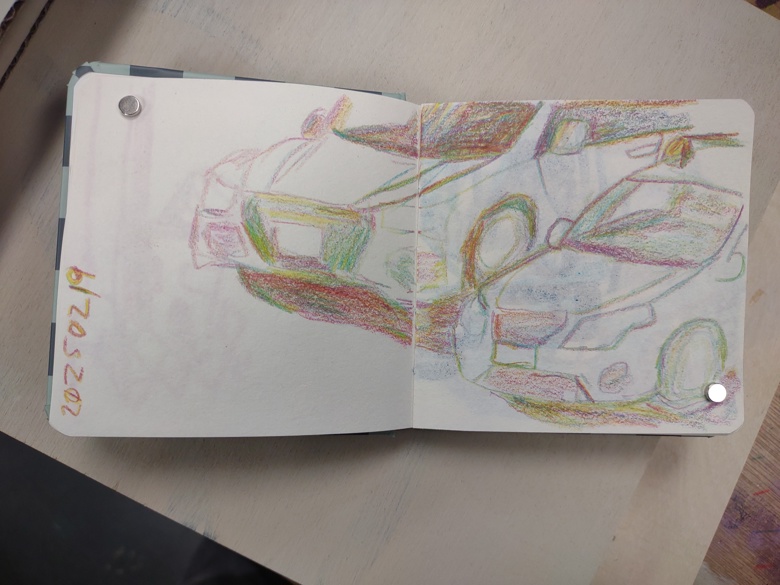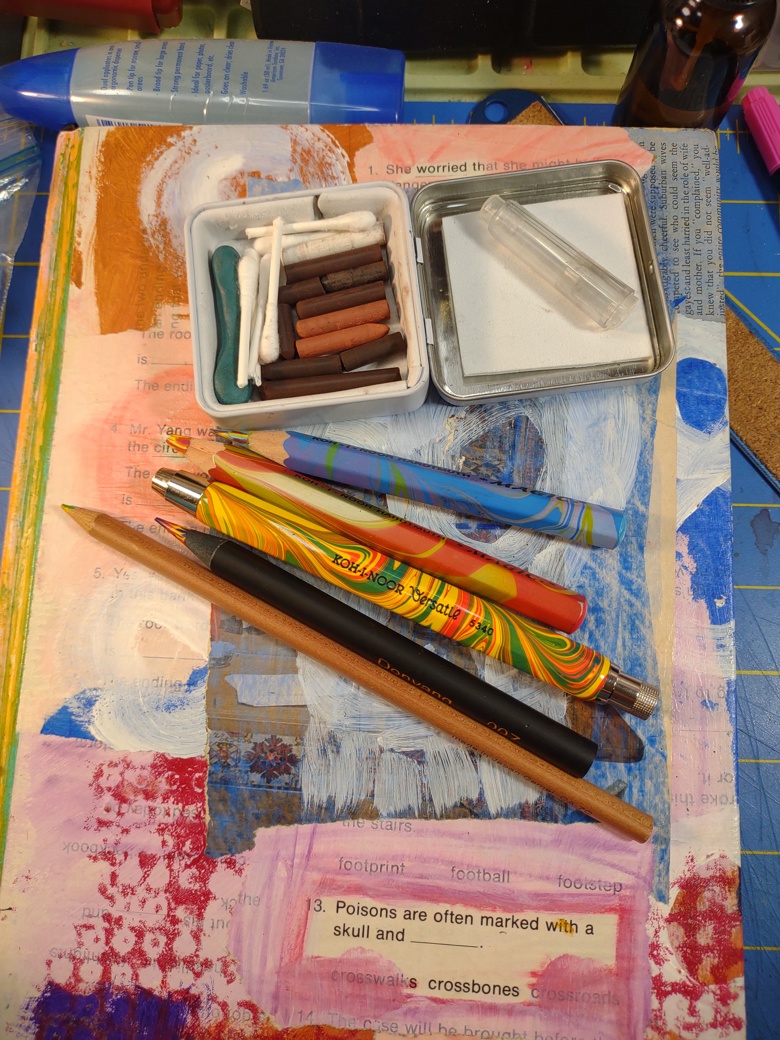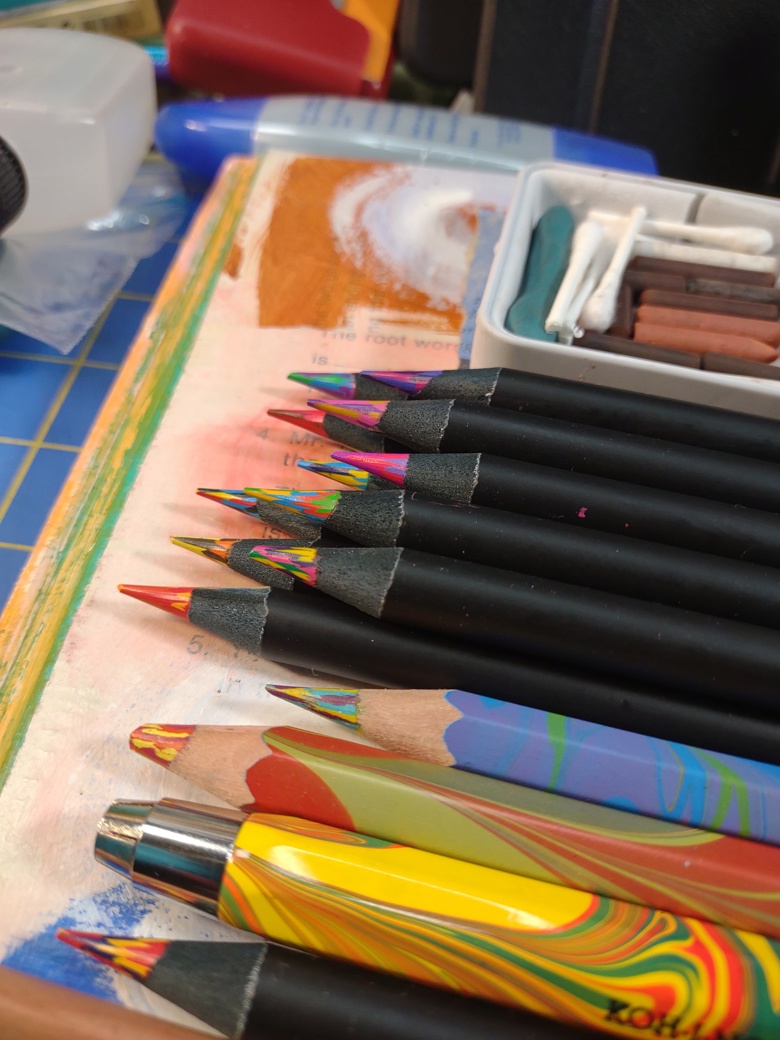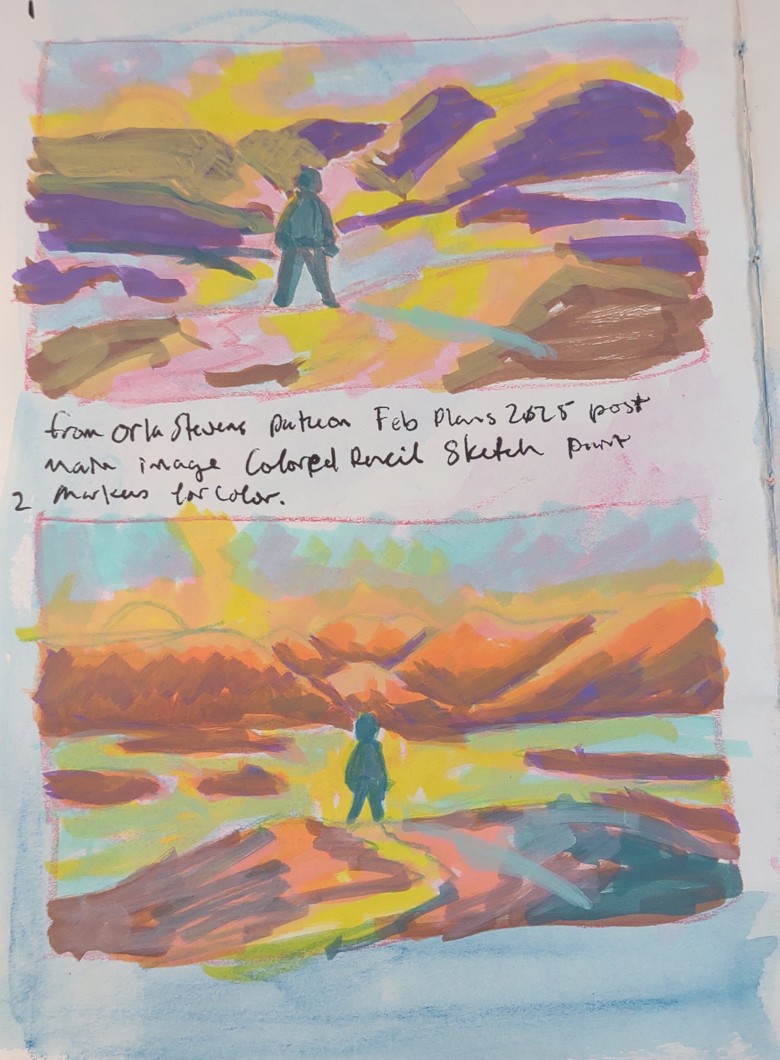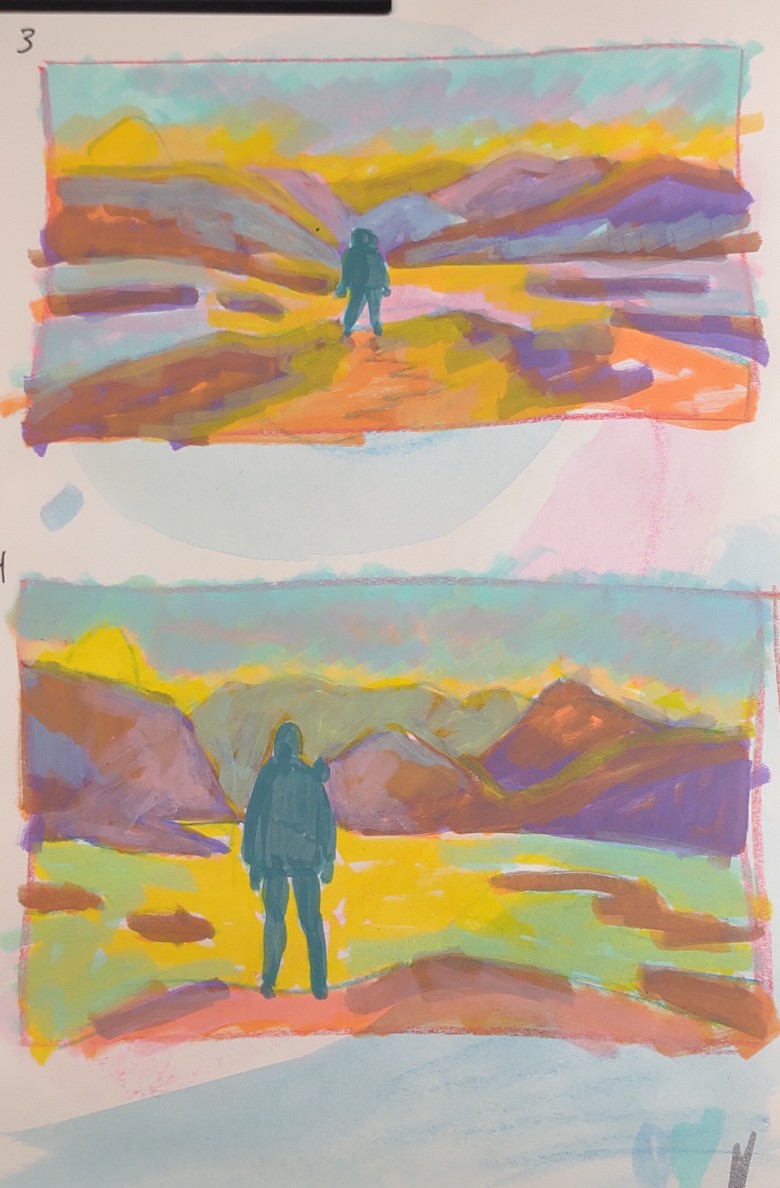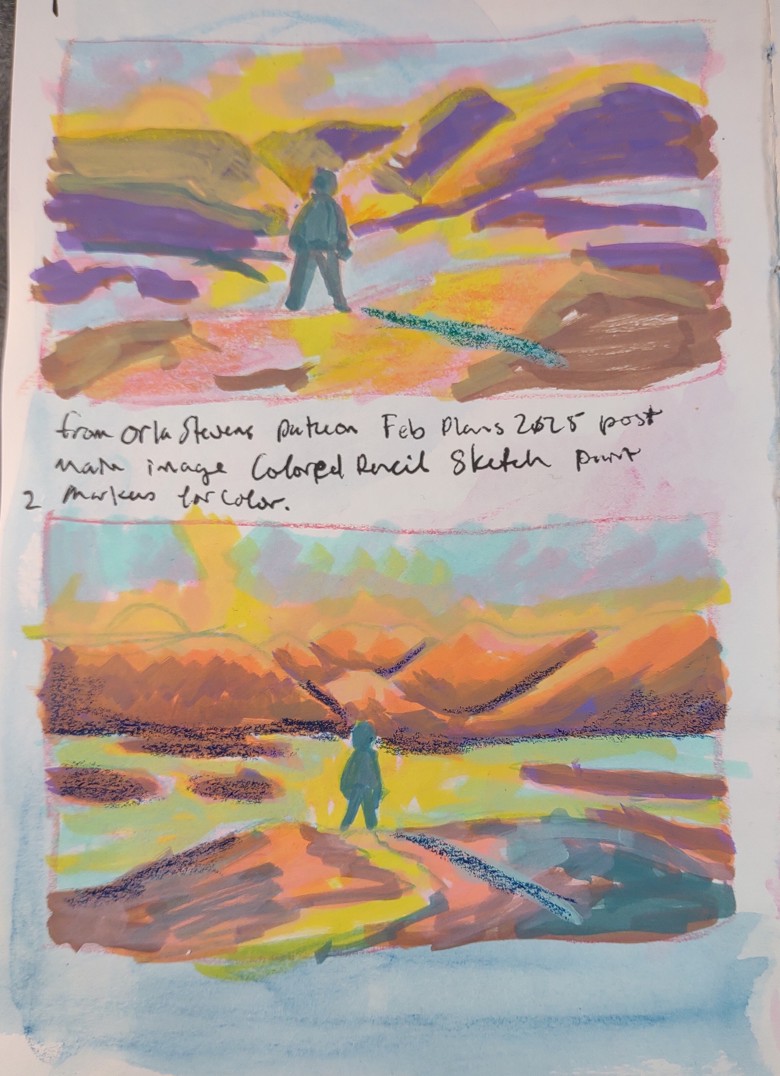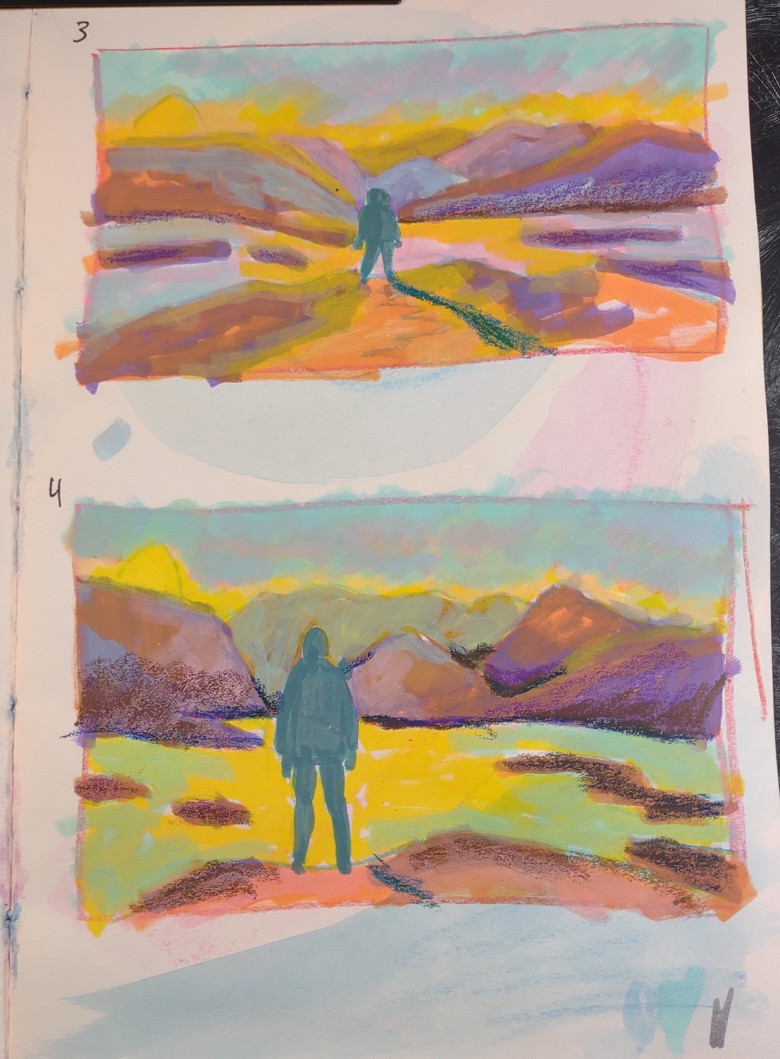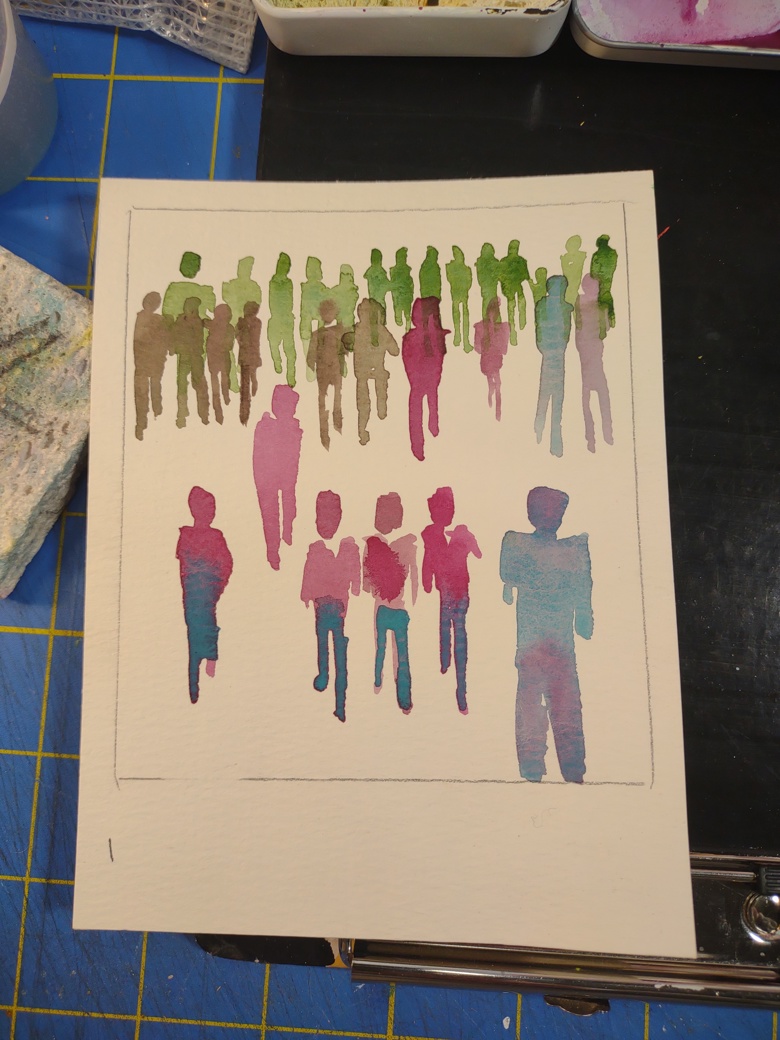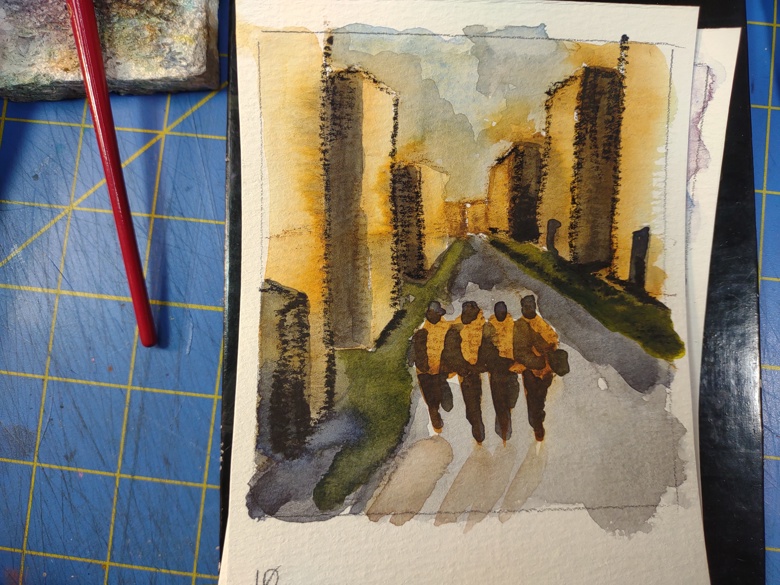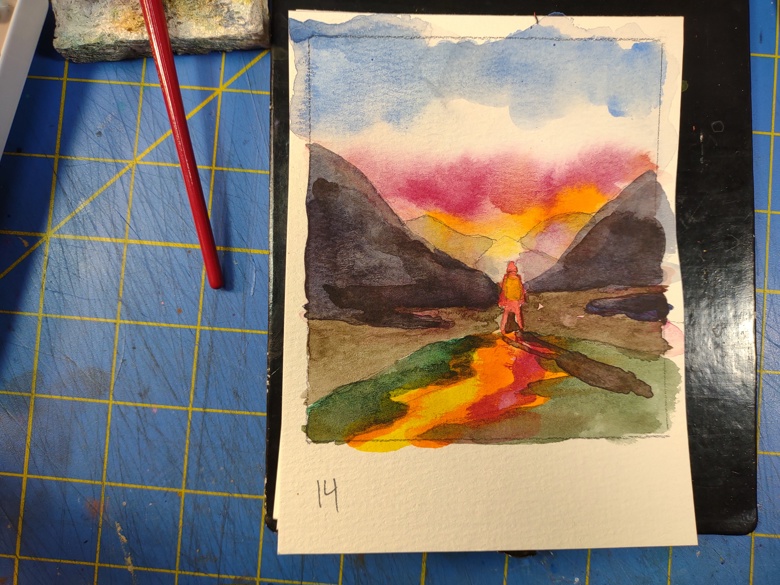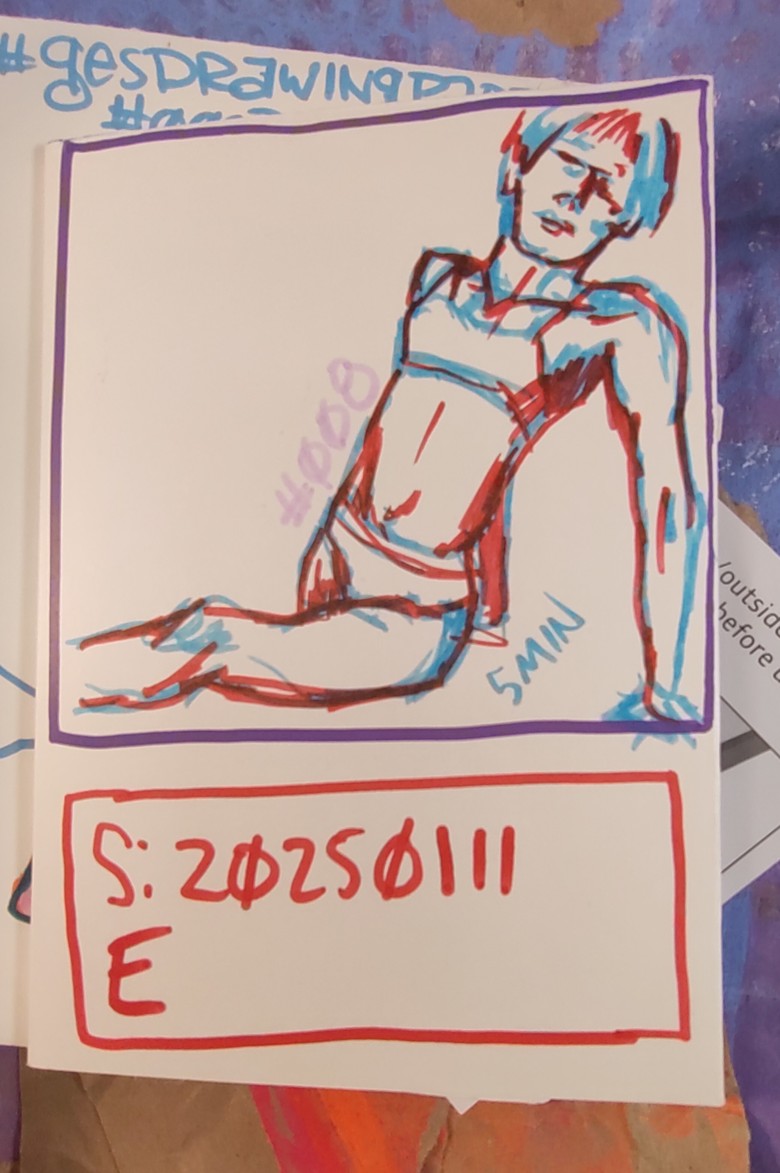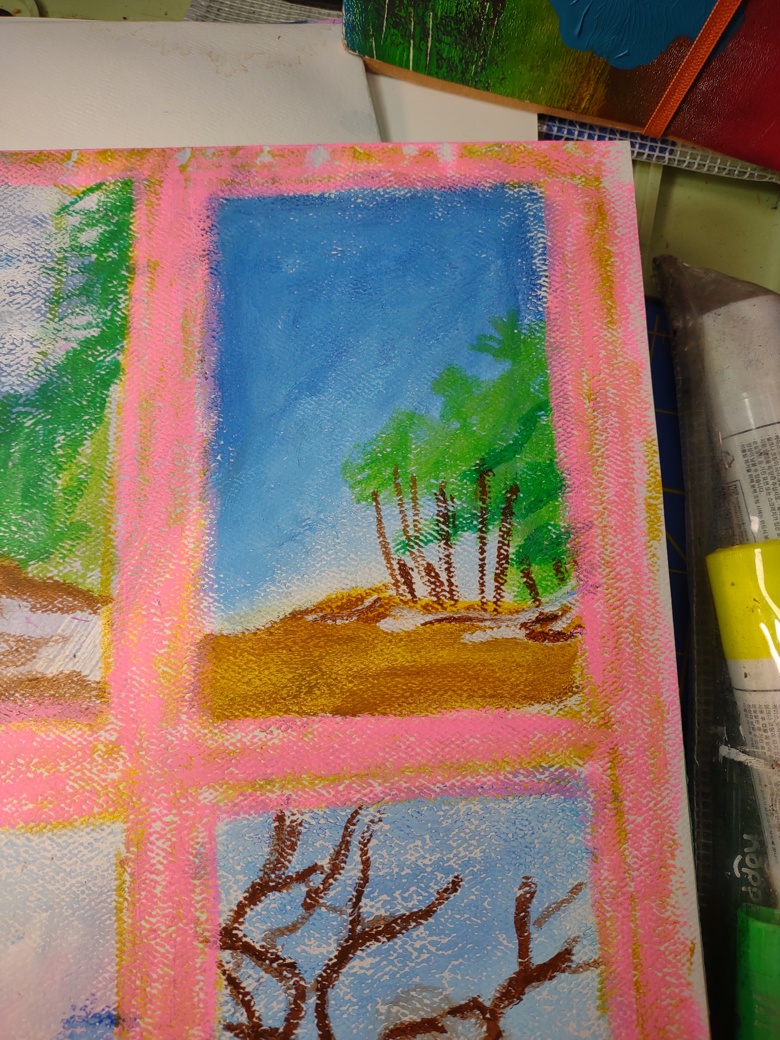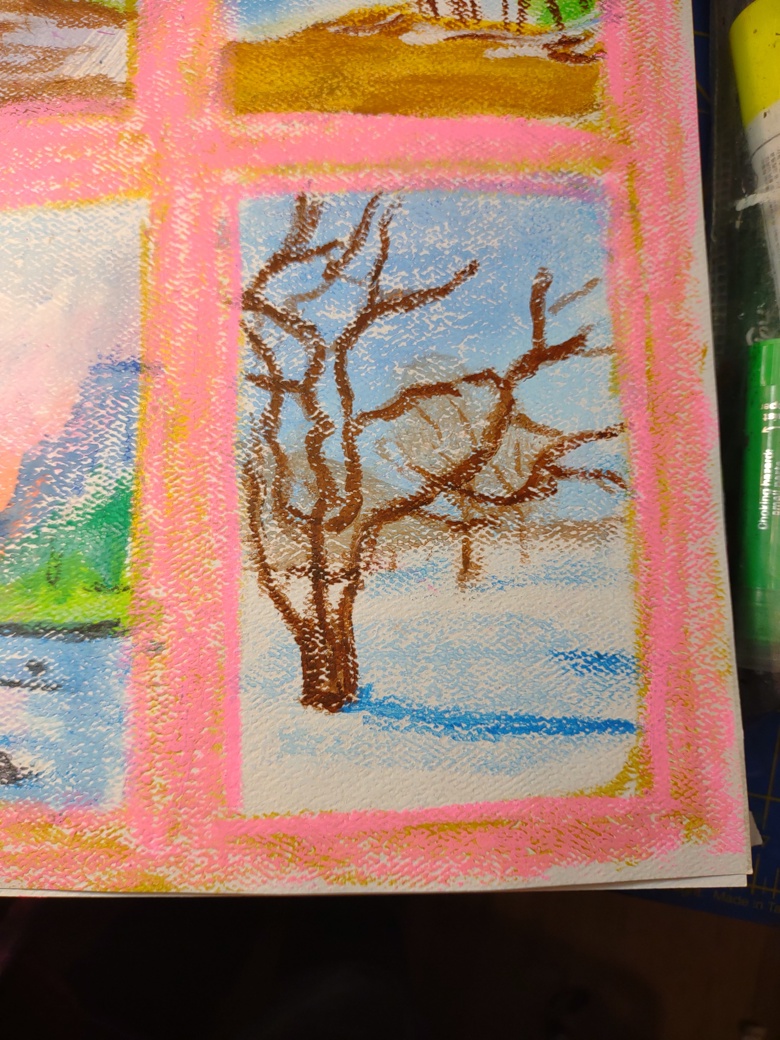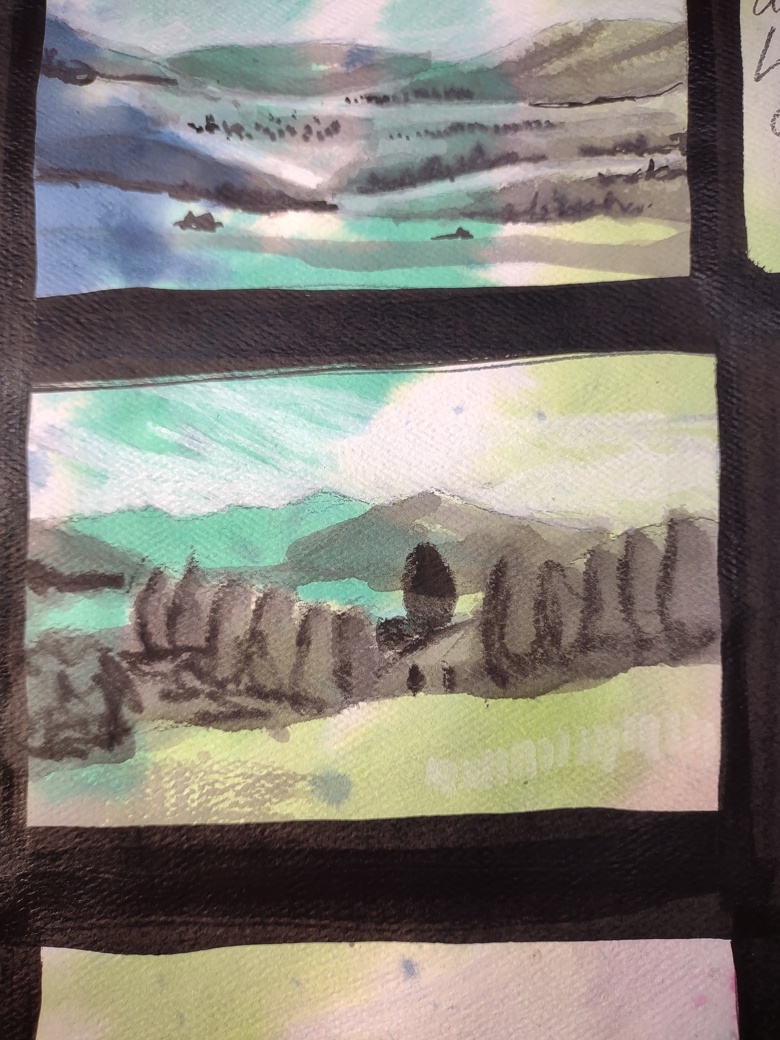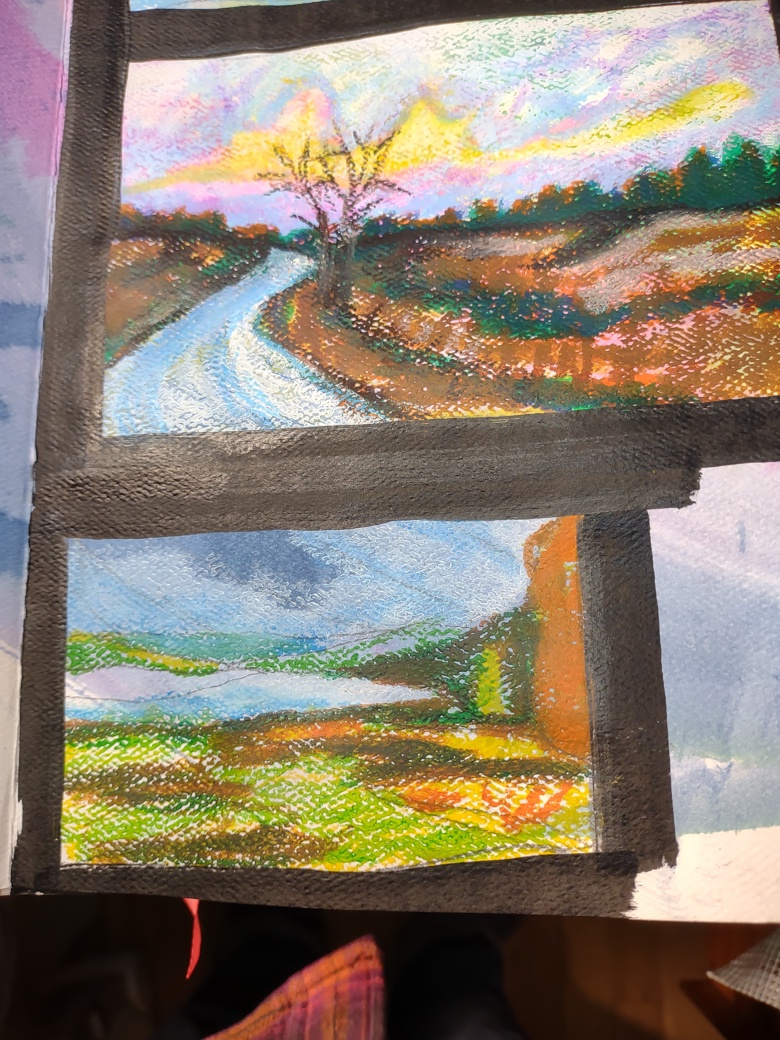I’ve completed a few hundred things challenges over the last few years. I’ve always done them in my own way. I know that I can’t and won’t complete a daily challenge or mostly ever be able to complete a monthly challenge. But when I do a challenge in my own way, I can get it done.
Yesterday I hit 102 in my own personal challenge- 300 Vehicles. 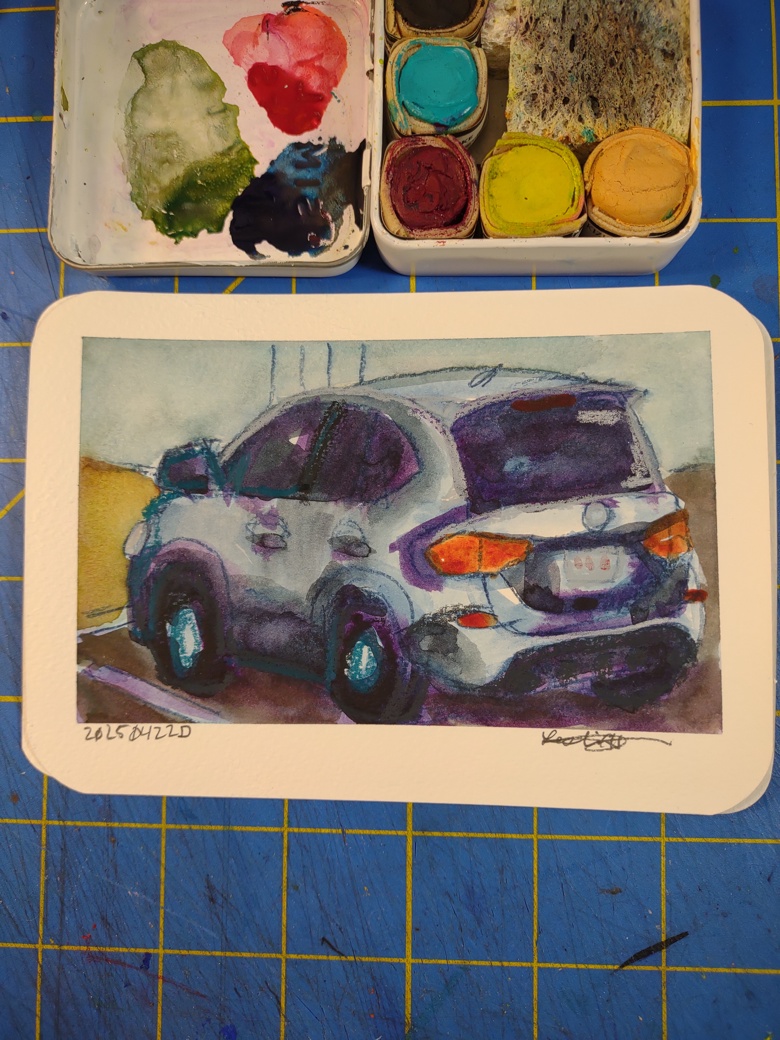
I don’t think I wrote about it here, except in a post that I hid away in my drafts. I got some news that has forced me to speed up some of my “focus on art due to values journaling” plans. A direct result of this was to put in an application for a pop up gallery show at a local art gallery and art association. It’s a long story and I fear not one I can share here.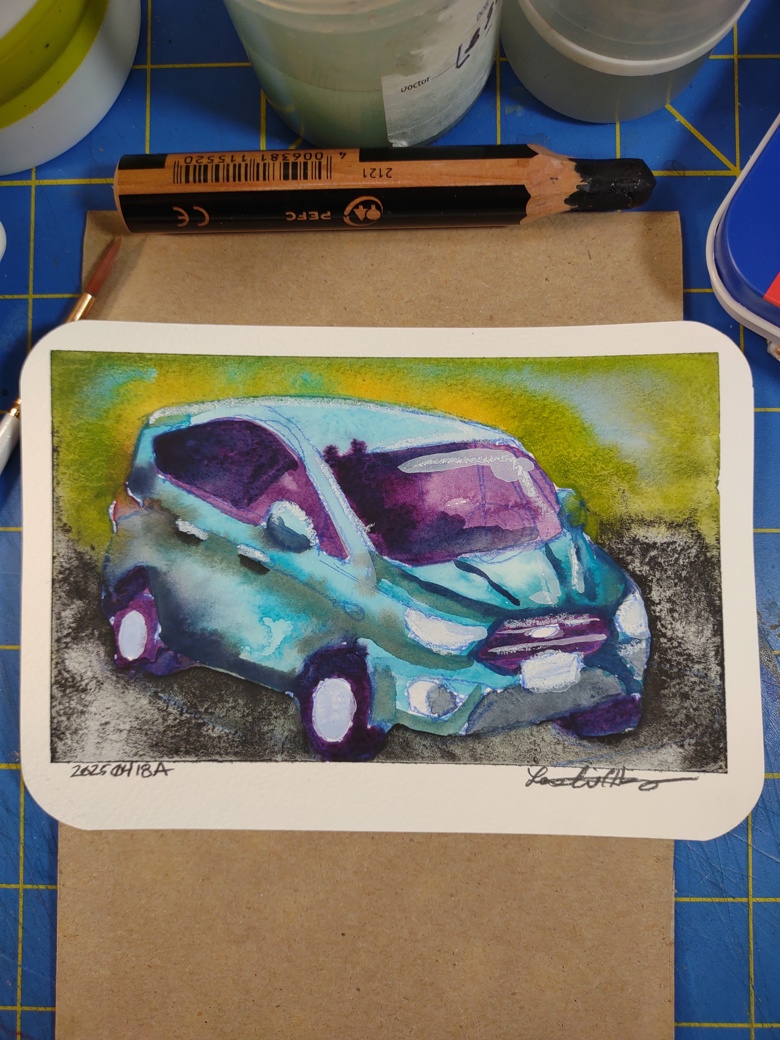
Anyway, when I was putting in the proposal for the show I had to decide on a number of images like those I was already making, that would look cool on the gallery wall and be impressive (to me.)
For whatever reason I settled on 300.
Why 300?
100 is a challenge that most of us can do.
200 is only double that and would look okay on the wall.
300 though, that’s kinda crazy. It’s not a bananas number like 1000. It’s enough that the small gallery will look filled and the walls will be packed.
It’s a stretch for me. I KNOW I can do 100. Can I do 300?
I hit 102 yesterday. 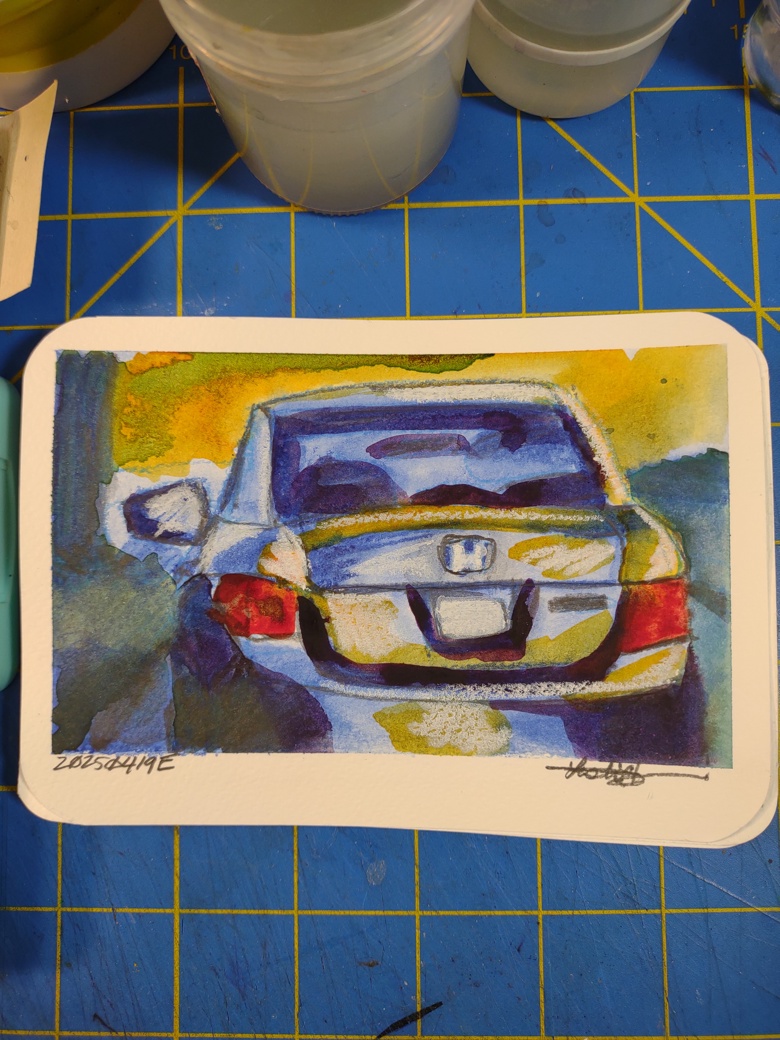
To complete 300 I need to make 1.75 images a day.
I’m usually making 2 or 3 with some weekend days 5.
One weekend day I did 10!
The process for the images is simple- I tape postcards up to some sturdy chipboard, a little heavier than soda box carton. Each postcard is taped with a little bit of a thicker margin at the bottom, probably 3/8th of an inch. With the other 3 edges getting 3/16th of an inch. I then sketch on site, en plein air, each car. 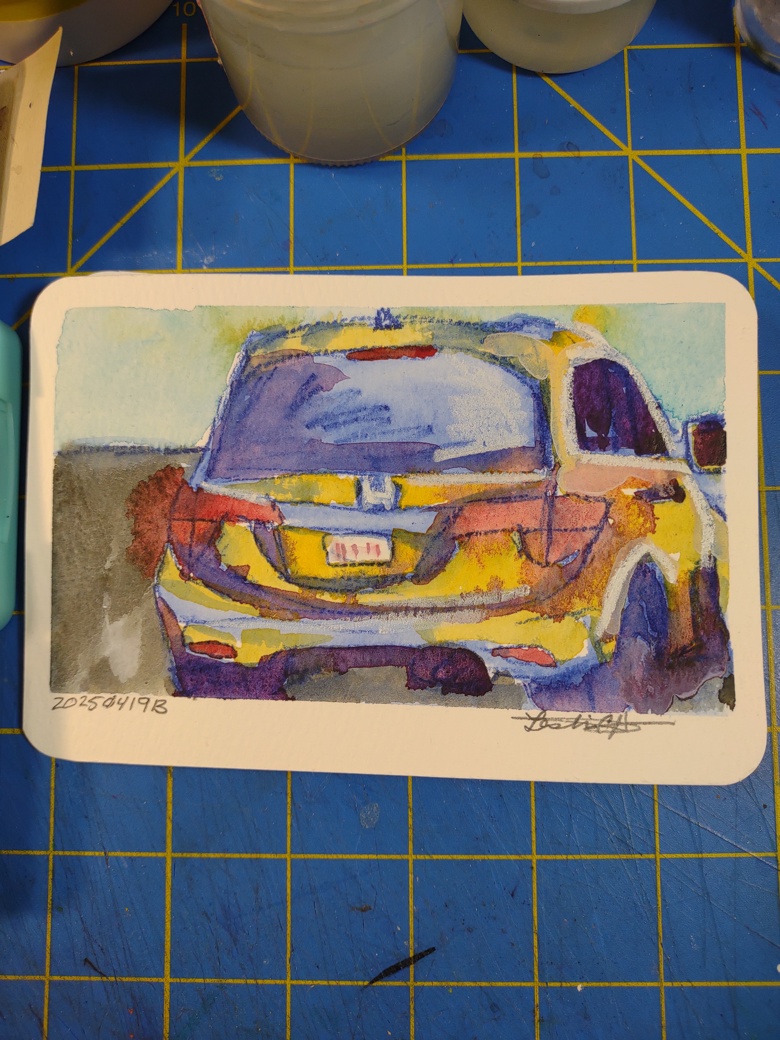
The media used for the sketch is a little different. I use colored pencils, mechanical colored pencils, and inktense colored pencils. The Koh-i-noor giconda magic colored pencil has been a real favorite. But inktense have been adding a lot of really nice base color to the images.
This is key to the process, the sketches are done QUICKLY. I try to spend no more than 5 to 10 minutes on each sketch. I am looking for vibes not realism. I’m looking at light and shadow.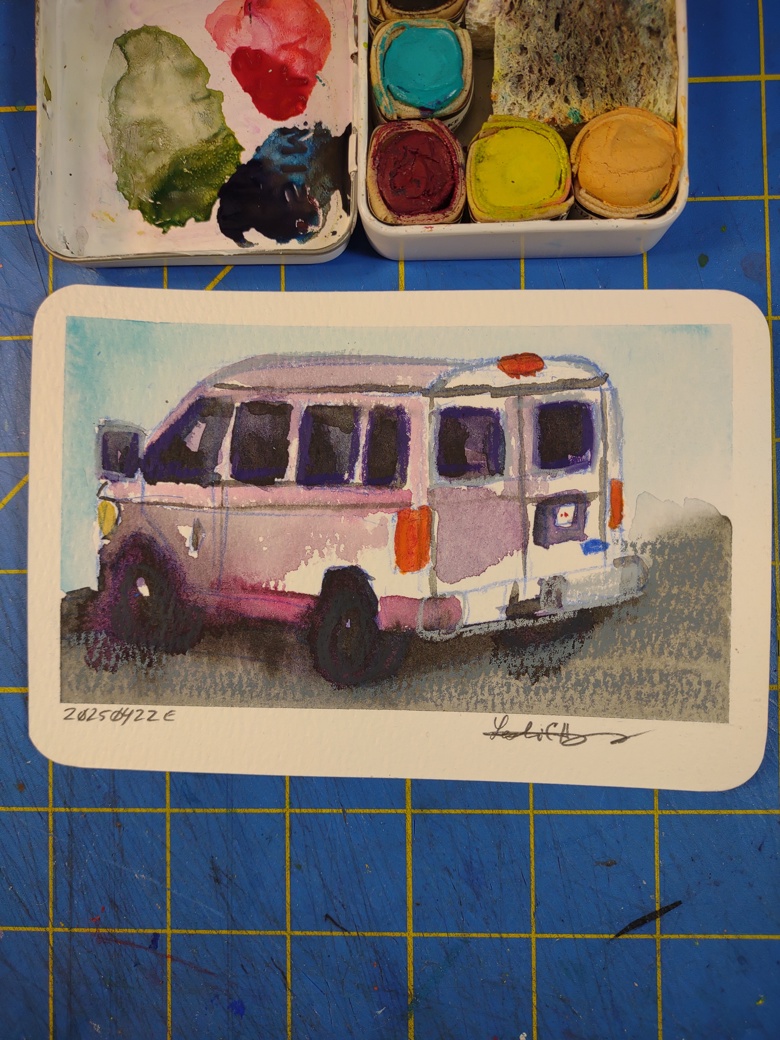
When it comes down to it, I can less about the vehicle itself and more about the shape, shadow and light.
After I complete the sketch it gets shoved into my bag and I start another, if I have time.
Then I add color in studio. I’ve been playing around with a lot of different paints. Beam paints* have been giving me some really nice granulating effect that I REALLY adore. I also have been leaning back on my favorites Holbein paints.
After painting I let the images dry and then I layer on some more colored pencils, some Neocolor 1 or 2s, then some china marker, or Stabilo Woody. I’ve added in some ink too.
Over all I’m really liking how free I feel as I make these images. I also really like that they go from a sketch that feels rooted in realism to something even more loose and free.
Anyway, here is number 100:
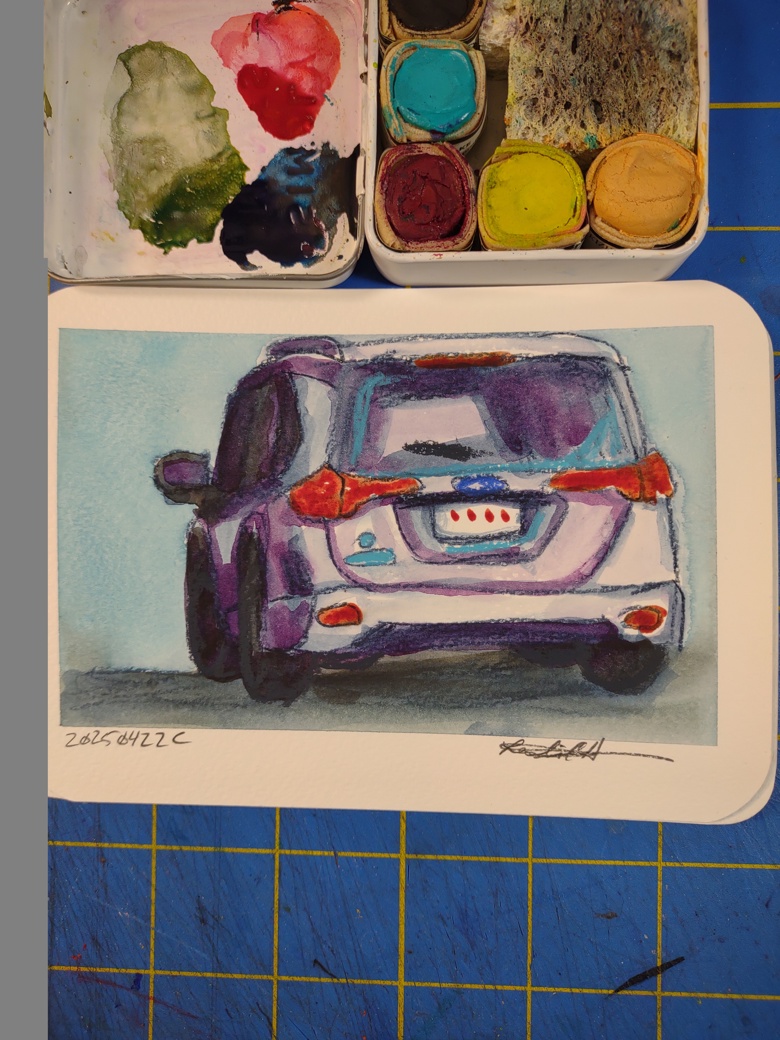
*Beam paints are really quite amazing but a little pricey. That said I really like their plastic free aesthetic and devotion to less toxic practices. It also makes me REALLY want to attempt to make some of my own paints and inks.
